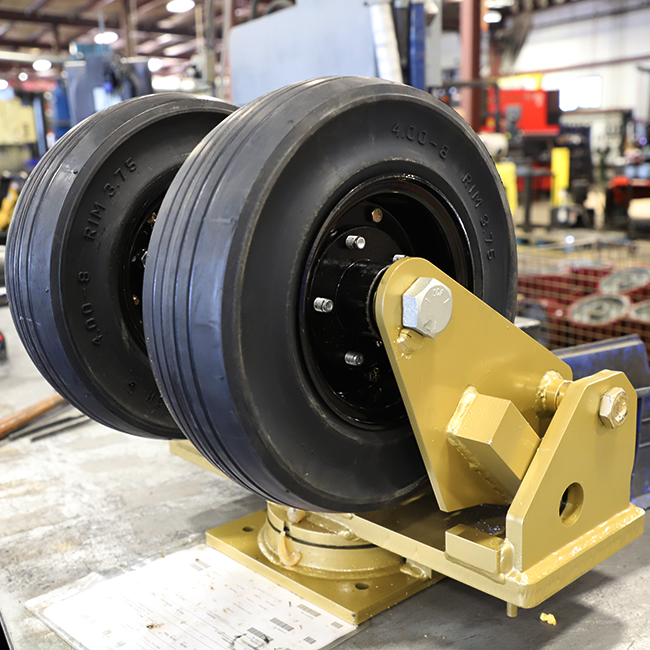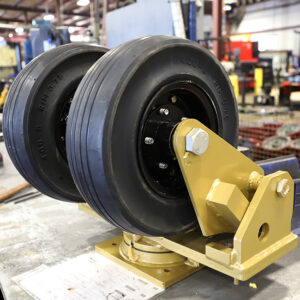
Inflated Benefits? Comparing Pneumatic Wheels vs. Cushion Tread Wheels.

Pneumatic wheels have many advantages, but cushion tread wheels are also an option.
When you think of a caster, you probably imagine a caster wheel that is solid and made of various materials such as iron, steel, or polyurethane. A pneumatic wheel is different. They’re made of rubber, filled with air or foam, and fit snugly against a metal hub when properly inflated. You can find these in numerous styles, sizes, and capacities to suit your needs, and they are just as common in outdoor heavy duty caster wheels applications as in light-duty industries.
Cushion tread wheels are also made with rubber. The difference is that they have a soft rubber core encased by a durable rubber cover. There are advantages to each, and depending on your needs, either can be a perfect choice for your application.
Pneumatic Wheels
Casters with pneumatic wheels, also known as pneumatic tires, offer a softer alternative than most industrial caster wheels. The pneumatic wheels cushion the load and roll over obstructions with ease. These casters provide longer wheel life, less maintenance, and high shock absorbency. They are also excellent for outdoor use, especially on rough or uneven surfaces like gravel or cracked cement.
Features |
Applications |
|
|
Cushion Tread Wheels

Aerol Cushion Tread Wheel
In the field of ground service equipment related to military operations, a pneumatic tire’s benefits may not be required. Recognizing the military’s need for a versatile and reliable solid rubber tired wheel, AEROL developed a line of Cushion Tread Wheels. The tire has a soft core of heat-resistant rubber to provide maximum shock mitigation and a tough rubber cover to ensure long wear. These wheels comply with all dimensional and performance requirements of Specification MIL-W-21985.
Low Maintenance: Cushion tread wheels require minimal maintenance compared to pneumatic wheels. They are not susceptible to punctures or leaks, making them suitable for environments where maintenance resources are limited. A rubber-filled wheel also has a higher load capacity than a pneumatic tire of the same size but is designed for slower speeds. Cushion tread wheels also offer shock mitigation characteristics comparable to pneumatic tires, interchangeability with standard pneumatic wheels used on aerospace and ground equipment, and a compact design that promotes these features in the smallest space possible.
Factors to consider before purchasing a Pneumatic Wheel or Cushion Tread Wheel.
 Because Pneumatic caster wheels are softer than many other options and have a larger footprint, this creates more friction with surfaces. As a result, it requires more initial force to start the load moving and maneuvering around corners. Cushion tread wheels are harder wheels, which makes them roll easier.
Because Pneumatic caster wheels are softer than many other options and have a larger footprint, this creates more friction with surfaces. As a result, it requires more initial force to start the load moving and maneuvering around corners. Cushion tread wheels are harder wheels, which makes them roll easier.
Remember to consider the environmental conditions, load requirements, and the nature of the surfaces your equipment will traverse when making your decision. If you have any questions, the engineering staff at Aerol has many years of experience applying pneumatic and cushion tread wheels for various applications.




